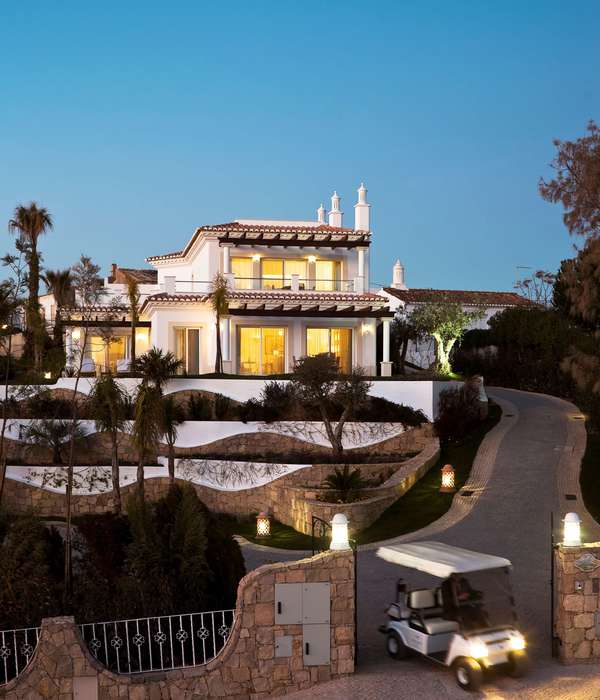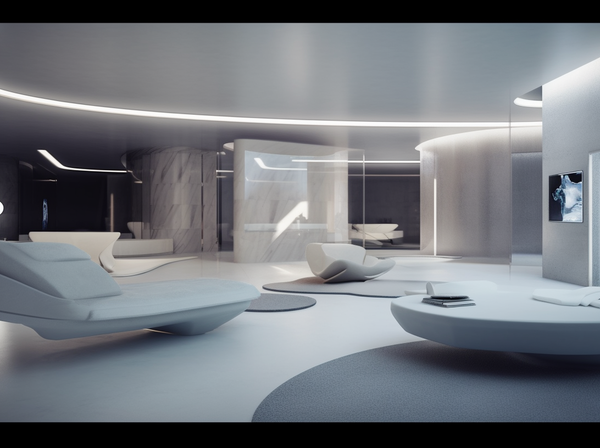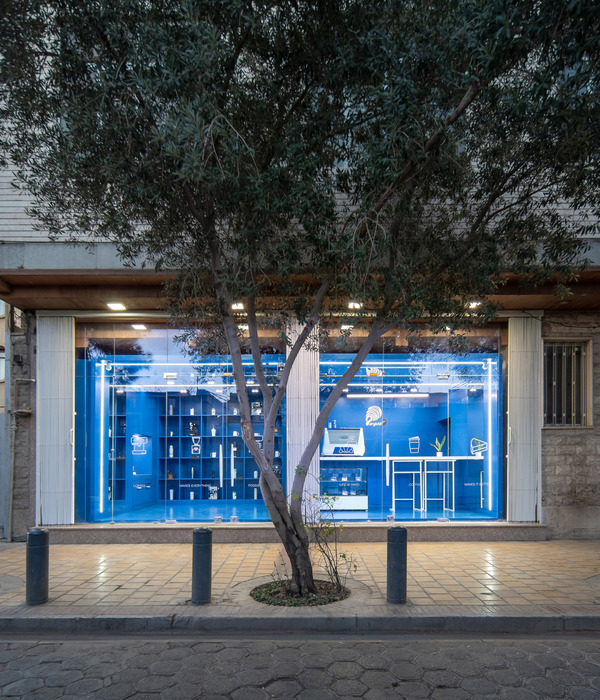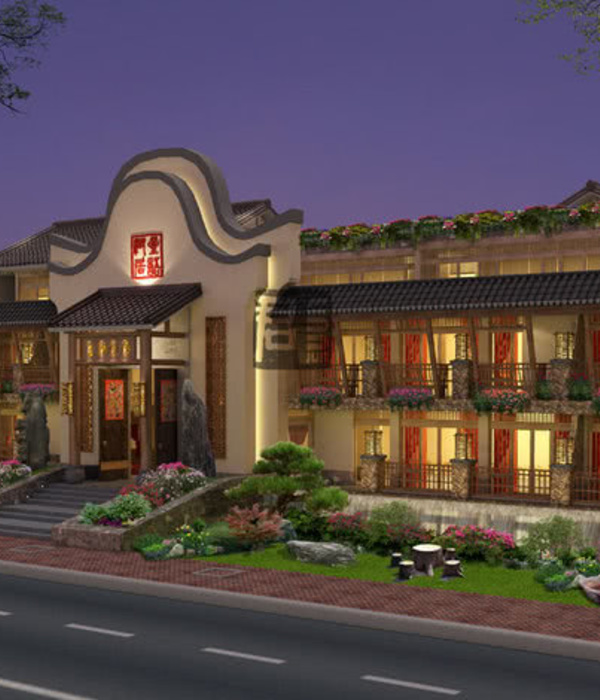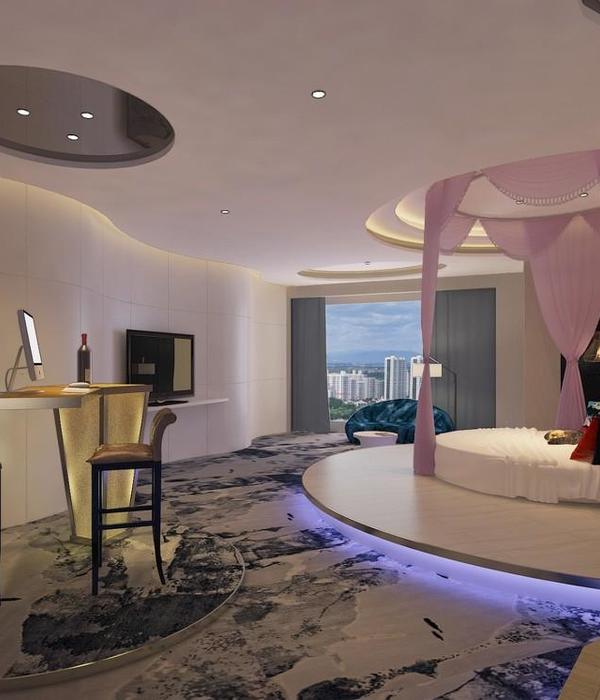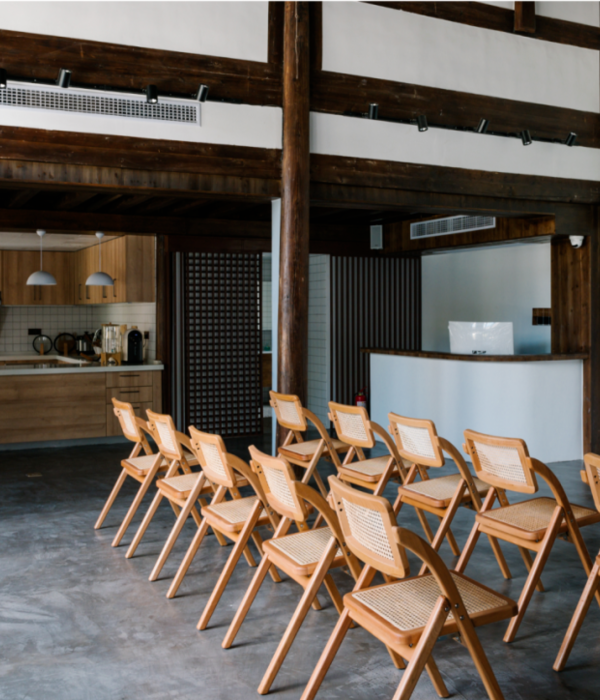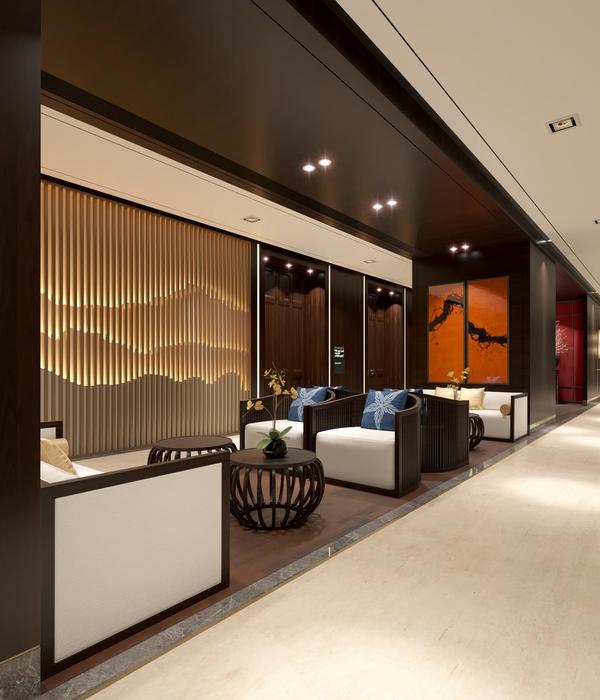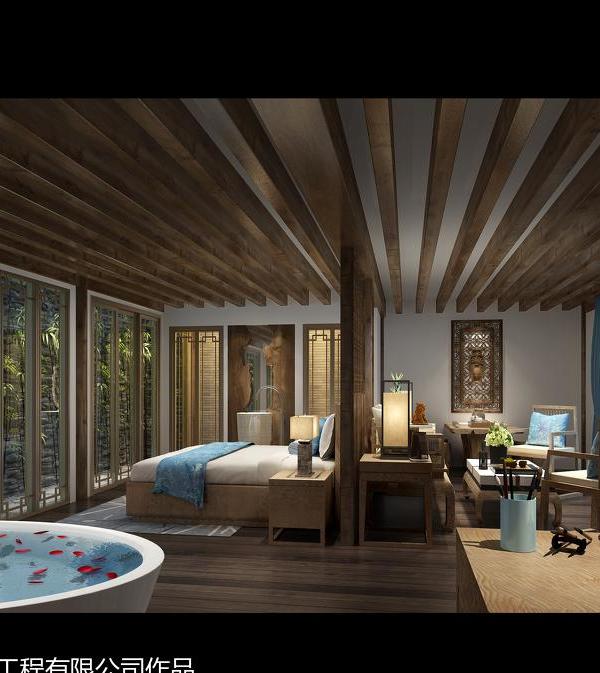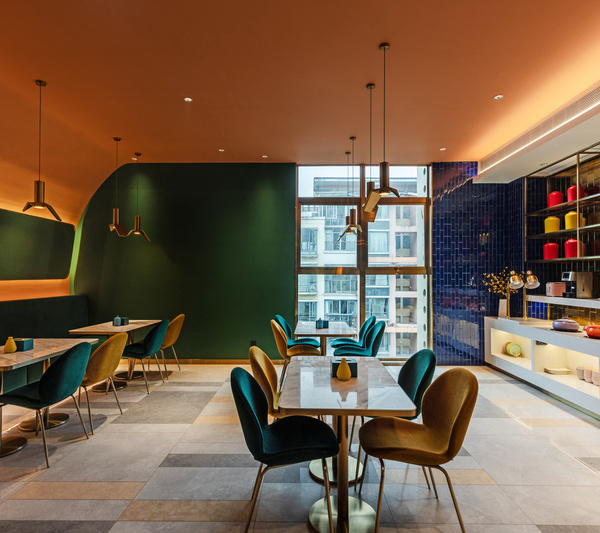- 项目名称:首钢工舍智选假日酒店
- 建筑事务所:中国建筑设计研究院有限公司
- 完成年份:2018年
- 建筑面积:9,890平方米
- 摄影师:陈颢,郑旭航
- 结构设计:王树乐,郭俊杰,居易
- 室内设计:曹阳,马萌雪,张秋雨,张洋洋,李小菲
“仓阁”——首钢工舍智选假日酒店设计始于2015年11月,2018年7月竣工。项目位于首钢老工业区北部,原为高炉空压机站、返焦返矿仓、低压配电室、N3-18转运站等4个工业建筑,改造后成为一座特色精品酒店,同时为紧邻的北京2022冬奥组委办公区员工提供倒班住宿服务。
“Cangge” – The design of Holiday Inn Express Beijing Shougang Silo-Pavilion was started in November, 2015 and completed in July, 2018. Located in the northern part of the old industrial zone of Shougang, it was transformed from the 1st blast furnace air compression station, the returning coke and ore bunker, the low-voltage power distribution room, the N3-18 transfer station, etc. four industrial buildings into a distinctive boutique hotel. It also provides shifts accommodation services for the staff of the Beijing 2022 Winter Olympic Organising Committee.
▼由客房阳台远眺首钢工业景观,the industrial context seen from the hotel balcony
设计最大限度地保留了原来废弃和预备拆除的工业建筑及其空间、结构和外部形态特征,将新结构见缝插针地植入其中并叠加数层,以容纳未来的使用功能:下部的大跨度厂房——“仓”作为公共活动空间,上部的客房层——“阁”漂浮在厂房之上。被保留的“仓”与叠加其上的“阁”并置,形成强烈的新旧对比。同时,“仓”的局部增加了金属雨篷、室外楼梯等新构件,“阁”则在玻璃和金属的基础上局部使用木材等具有温暖感和生活气息的材料,使“仓阁”在人工与自然、工业与居住、历史与未来之间实现一种复杂微妙的平衡。
▼改造示意图,renovation diagram
The original abandoned and ready-to-be-demolished industrial buildings and their spatial, structural and external morphological features are preserved to the utmost extent. And new structures are inserted into them and stacked several layers to accommodate future functions: the lower long span factory – “Cang” is used as a public Lebensraum, and the upper guest room – “Ge” floats above the factory building. The juxtaposed “Cang” reserved together with the “Ge” superimposed on it, form a strong contrast between the old and new. At the same time, some parts of “Cang” have been added with new components such as metal awnings and outdoor stairs. On the basis of using glass and metal, “Ge” has partially used materials such as wood and other materials with warmth and vitality. All of above help “Cangge” realize a complex and delicate balance between artificial and nature, industry and dwelling, history and future.
▼首钢工舍与远处的热风炉,the Holiday Inn Express Beijing Shougang Silo-Pavilion and the adjacent air stove ©陈颢
▼自西南望首钢工舍,view to the Silo-Pavilion from southwest ©陈颢
▼室外楼梯,outdoor staircase ©陈颢
新旧建筑相互穿插创造出一个令人兴奋的内部世界:“仓阁”北区由一高炉空压机站改造而成,原建筑的东、西山墙及端跨结构得以保留,吊车梁、抗风柱、柱间支撑、空压机基础等极具工业特色的构件被戏剧性地暴露在大堂公共空间中,新结构则由下至上层层缩小,屋顶天光通过透光膜均匀漫射到环形走廊,使整个客房区域充满宁静氛围,错落高耸的采光中庭在“阁”内形成颇具仪式感的“塔”型内腔,艺术灯具从天窗向下垂落,宛如一片轻盈虚透的金属幔帐,柔化了宁静硬朗的空间形式,与原始粗犷的工业遗存形成鲜明对比。
▼改造前西南鸟瞰照片,aerial view of the original site ©郑旭航
The old and new buildings interspersed here create an exciting inner world. The “Cangge” North District was reconstructed from the original 1st blast furnace air compressor station. The east and west gables as well as the end span structures of the original building were preserved. The components of distinctive industrial characteristics such as crane beam, wind-resistant column, inter-column support, air compressor foundation, etc. are dramatically exposed in the public space of the lobby. The new structure is shrunk from the bottom to the upper. The roof skylight diffuses evenly through the transparent film to the circular corridor, making the entire guest room area full of tranquility, and the scattered towering lighting atrium forms a ceremonial “tower” type cavity in “Ge”. The artistic lamps hang down from the skylights, liking a light and empty metal canopy, softening the quiet and tough space form, and forming a vivid contrast with the original rough industrial remains.
▼门厅完整保留原厂房结构, the components of distinctive industrial characteristics are dramatically exposed in the public space of the lobby ©陈颢
▼中庭,atrium ©陈颢
▼大堂吧,裸露的混凝土构件为原空压机基础,lobby bar: the exposed concrete structure was used as the foundation of the air compressor ©陈颢
▼客房层公共空间,public space of the guest room level ©陈颢
“仓阁”南区由原返焦返矿仓、低压配电室、N3-18转运站改造而成,3组巨大的返矿仓金属料斗与检修楼梯被完整保留在全日餐厅内部,料斗下部出料口改造为就餐空间的空调风口与照明光源,上方料斗的内部被别出心裁地改造为酒吧廊,客人穿行其间,获得独一无二的空间体验;客房层出檐深远,形成舒展的水平视野,在阳台上凭栏远眺,可俯瞰改造后的西十冬奥广场和远处石景山的自然风光。
▼原N3-18转运站被改造为楼梯间,the old N3-18 transfer station was renovated as the stair well ©陈颢
The “Cangge” South District was transformed from the returning coke and ore bunker, the low-voltage power distribution room and the N3-18 transfer station. The three sets of huge metal hoppers of returning ore bunker and overhauled stairs are completely retained inside the all-day dining room. The bottom discharge hole of the hopper is transformed into the air conditioning vent and lighting source of the dining space. And the interior of the upper hopper is transformed into a bar, in which the guests enjoy a unique space during the walk. The guest rooms have got deep eaves, which forms an extended horizontal field of view. Leaning on a balcony looking at the distance, people can overlook the Xishi Winter Olympics Plaza and the natural scenery of the distant Mount Shijingshan.
▼全日餐厅,all-day dining room ©陈颢
▼料斗下部出料口改造为就餐空间的空调风口与照明光源,the bottom discharge hole of the hopper is transformed into the air conditioning vent and lighting source of the dining space ©陈颢
▼利用返矿仓改造成的酒吧,the bar was transformed from a huge metal hoppers of returning ore bunker ©陈颢
▼经过清理的金属料斗内部可供参观,the upper hopper now functions as the bar corridor for visiting ©陈颢
设计过程中,建筑师与结构工程师密切配合,对原建筑进行全面的结构检测,确定了“拆除、加固、保留”相结合的结构处理方案;使用粒子喷射技术对需保留的涂料外墙进行清洗,在清除污垢的同时保留了数十年形成的岁月痕迹和历史信息。
During the design process, the architect and the structural engineer worked closely together to carry out a comprehensive structural inspection of the original building, and determined the structural treatment plan combining demolition, reinforcement and retention. Thanks to the particle jet technology which is used to clean the exterior coating walls that need to be preserved, the dirt is removed while the traces of history are remained intact.
▼南北区之间的天井,the patio between the north and south campus ©陈颢
“仓阁”是西十冬奥广场各单体中旧建筑保存最完整的一座,设计尊重工业遗存的原真性,延续首钢老工业区的历史记忆,通过新与旧的碰撞、功能与形式的互动,使场所蕴含的诗意和张力得以呈现,它曾经是首钢厂区生产链条上不可或缺的一个节点,今天则是城市更新的一次生动实践,并与北京2022冬奥会的可持续理念高度契合。
“Cangge” is one of the most complete preserved old buildings in the Xishi Winter Olympics Plaza. The design respects the authenticity of the industrial remains, continues the historical memory of the old industrial zone of Shougang, and presents the poetry and tension of the place through the collision between the old and new and the interactions in function and form. “Cangge”, once an indispensable node in Shougang’s production line, has now become a compelling example of city regeneration and is highly compatible with the sustainable concept of the 2022 Beijing Winter Olympics.
▼自冬奥组委办公区望首钢工舍,view from the administration area of Xishi Winter Olympics ©陈颢
▼改造前原状,the original site ©郑旭航
▼设计手稿,design concept
▼总平面图,site plan
▼首层平面图,plan level 1
▼六层平面图,plan level 6
▼西立面图,west elevation
▼A-A剖面图,sectionA-A
{{item.text_origin}}

